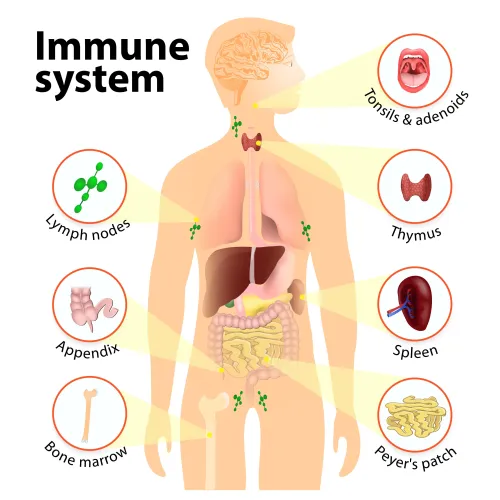Use This Advice to Master Vaccination Coding

Remember to check for supply coding chances.
If your internist performs vaccinations for patients, you will need to report vaccine administration in addition to reporting supply of the vaccine.
Use these four useful tips that will help guide you through reporting vaccine administration codes each time your clinician administers vaccines to a patient.
Tip 1: Check Admin Route
When a patient has a vaccine administered, you will have to watch the route of administration as this may affect your code choice. For instance, the route of administration helps distinguish among the following four codes for administration of a vaccine(s):
Note that these codes should be used in patients above the age of 18 years. You can also use this set of codes to report vaccine(s) administration for a patient that is 18 or younger if your physician or other qualified health care professional did not counsel either the patient or the patient’s parents about the vaccine.
When your clinician administers a vaccine intramuscularly, you need to report the vaccine administration with 90471. If he administers more than one vaccine intramuscularly, you will need to report one unit of 90471 for one vaccine and report appropriate units of +90472 for each of the other vaccines administered. For instance, if your clinician administered three separate vaccines intramuscularly, you will need to report one unit of 90471 and two units of +90472.
“It’s important to note that code +90472 is for administration of a separate vaccine,” says Kent Moore, senior strategist for physician payment at the American Academy of Family Physicians. “A single combination vaccine would not require use of +90472. For example, if you administered 90636 (Hepatitis A and hepatitis B vaccine (HepA-HepB), adult dosage, for intramuscular use), you would only report the administration with 90471, not 90471 and +90472.”
Similarly, you report a vaccine administered orally or intranasally with 90473. If your clinician administers more than one vaccine through this route, you report the additional vaccines with +90474.
On the other hand, if your clinician administers one vaccine intramuscularly and the other vaccine(s) intranasally or orally, you cannot report 90473 with 90471. If you look at Correct Coding Initiative (CCI) edits, you will see that these two codes are bundled with the modifier indicator ‘0,’ telling you that you cannot overcome the edit under any circumstance. In such an instance, you will need to report the vaccine administered intramuscularly with the base code, 90471 and the vaccine(s) administered orally or intranasally with appropriate units of +90474.
Use Different Codes for Counseling Minors
When your clinician administers a vaccine to a patient who is 18 years or younger and during the encounter, he also counsels either the patient or the patient’s parents about the vaccine, you should not report any of the codes from 90471-90474. Instead, you will need to report the administration of the vaccine with these codes:
When you are using this set of codes, you report the same codes irrespective of route of administration. “The administration code is 90460 and +90461 that can be used for immunizations and vaccines when it includes a counseling component,” says Suzan (Berman) Hauptman, MPM, CPC, CEMC, CEDC, senior principal of ACE Med, a medical auditing, coding and education organization in Pittsburgh, Pa.
If a single-component vaccine is administered along with counseling to a patient 18 years or younger, the vaccine administered should be reported with 90460. If your clinician is providing two single component vaccines to a patient along with counseling about each of the vaccines, you will need to report one unit of 90460 and one unit of +90461 for the administration
of the vaccines. “The descriptor of 90460 includes the phrase ‘first or only,’ so any component administered with counseling beyond the first will require the use of +90461,” Moore says.
Similarly, if your clinician is administering a combination vaccine that provides coverage for different conditions and counsels on each component, you report one unit of the base code, 90460 and report appropriate units of add-on code, +90461, depending on the number of components the combination vaccine has. For instance, if the combination vaccine administered provides coverage for three different conditions, you report one unit of 90460 and two units of +90461.
Opt for G Codes With Medicare Patients
When your clinician administers a vaccine to a Medicare patient, you will have to check the condition that the vaccine is providing coverage for, as this may affect your code selection. You have the following choice of codes to report from when your clinician administers a vaccine to a Medicare patient:
So, when your clinician administers a vaccine to a Medicare patient, you will have to report the vaccine administration based on what condition the vaccine is providing coverage against. So, for instance, if your internist administers Pneumovax, you will have to report G0009.
Remember Supply Codes
Whenever your clinician administers a vaccine to a patient, you should report one of the above-mentioned codes for the vaccine administration. But, at the same time, your reporting will not be complete if you do not report the appropriate code for the supply of the vaccine.
So, for instance, if your clinician administered Pneumovax 23 to a patient, you will have to report the supply of the vaccine with 90732 (Pneumococcal polysaccharide vaccine, 23-valent (PPSV23), adult or immunosuppressed patient dosage, when administered to individuals 2 years or older, for subcutaneous or intramuscular use) while you report 90630 (Influenza virus vaccine, quadrivalent (IIV4), split virus, preservative free, for intradermal use) for the administration of a quadrivalent, preservative free influenza vaccine administered intradermally.




